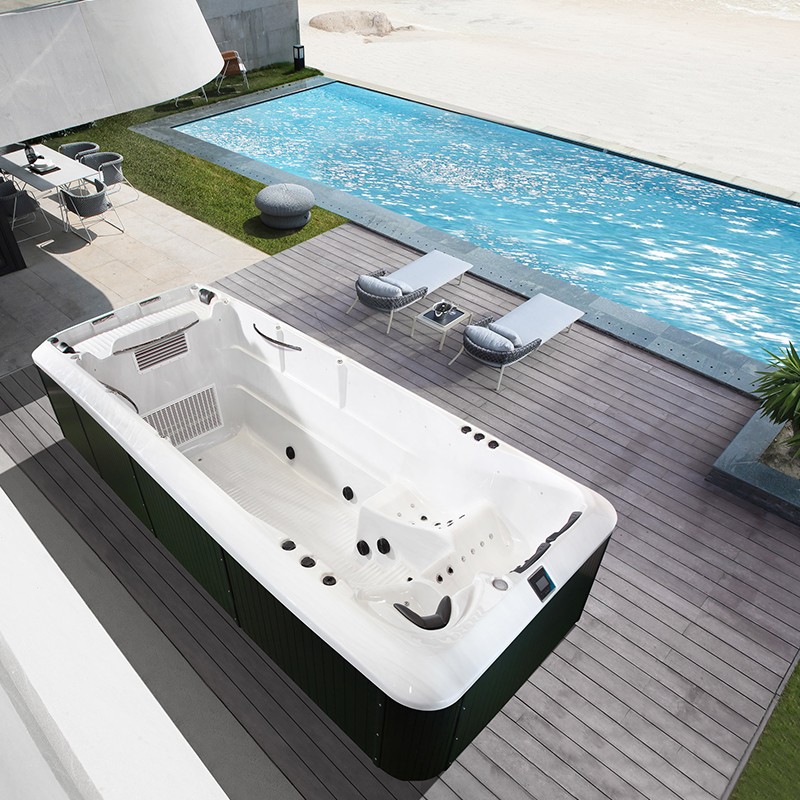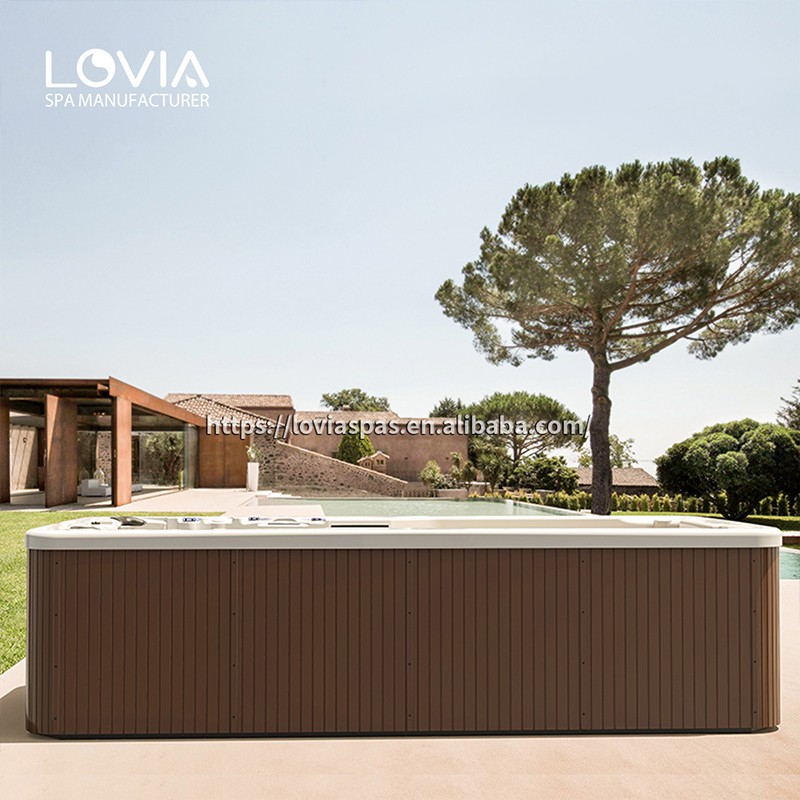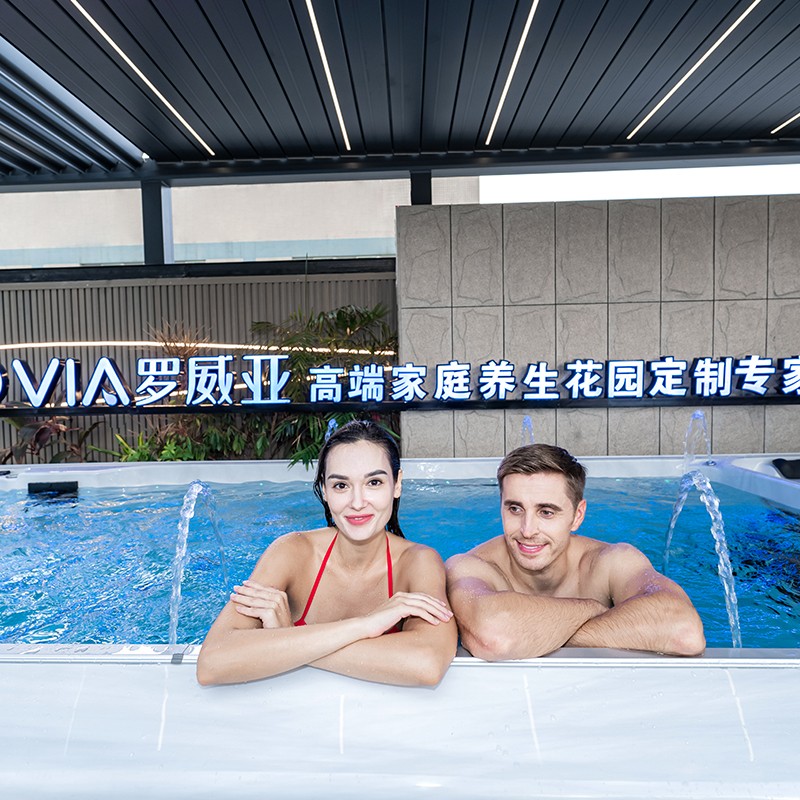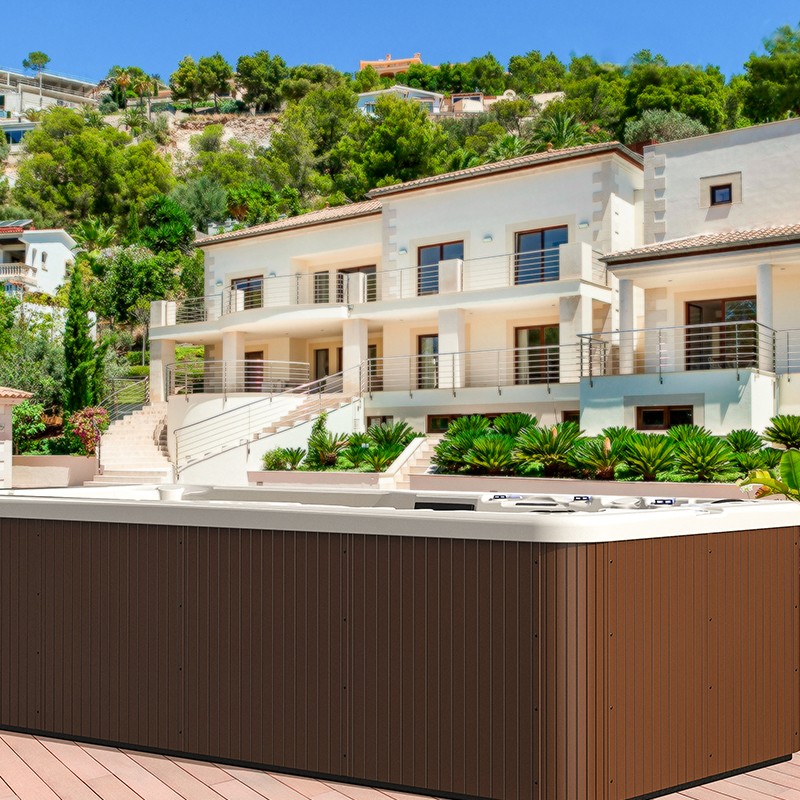
Why does the water in my swim spa tub turn yellow after adding chlorine?
2025-10-24 15:35Maintaining the water quality of a swim spa tub requires both knowledge and responsibility. Many users notice a confusing yellowing of the water after adding chlorine. This change often raises concerns: Is it a problem with the disinfectant? Is it harmful? Is it an equipment malfunction? In reality, the yellowing of the water is the result of a complex interplay of factors, including chemistry, water sources, equipment, and maintenance.
This article will delve into the causes of yellowing of swim spa tub water after adding chlorine. It will systematically analyze five key aspects: water composition, chlorine reaction mechanism, external contamination sources, operational errors, and preventative measures. This will help readers understand and address this common yet often misunderstood issue.

Basic Operating Environment of a Swim Spa Tub
To correctly understand the phenomenon of yellowing water, we must first understand the basic operating environment of a swim spa tub. A typical swim spa tub consists of the following key elements:
· Water source (tap, well, or filtered water)
· Water pump and circulation system
· Nozzles and heating system
· Additives (such as chlorine, pH adjusters, flocculants, etc.)
· Water quality monitoring equipment (test strips, electronic monitors, etc.)
In this system, water is a constantly circulating, controlled, and dynamically changing medium. Therefore, any chemical added must consider its potential reactions with dissolved substances in the water, particularly chlorine.
The Basics of Chlorine as a Swim Spa Disinfectant
Chlorine is one of the most common swim spa disinfectants currently used, effectively killing microorganisms such as bacteria, viruses, and fungi.
Common chlorine sources include:
· Liquid chlorine (sodium hypochlorite, NaClO)
· Solid chlorine tablets (such as trichloroisocyanuric acid)
· Chlorine powder (such as calcium hypochlorite, Ca(ClO)₂)
Chlorine reacts primarily in water to form the following chemical reaction: Cl₂ + H₂O ⇌ HOCl + HCl.
Among them, hypochlorous acid (HOCl) is the component that actually plays a disinfecting role. However, at the same time, the strong oxidizing property of chlorine is also prone to side reactions with various impurities in the water, resulting in color change reactions - this is the main reason why the water turns yellow after adding chlorine.

Analysis of the main reasons why water turns yellow after adding chlorine
The following are several common reasons why water in swim spa tubs turns yellow after adding chlorine.
Each category has an independent chemical mechanism:
1. Metal ion oxidation (most common)
(1) Oxidation reaction of iron ions (Fe²⁺)
In some areas, tap water or well water may contain trace amounts of soluble iron ions (Fe²⁺). These ions themselves are colorless in water, but they will be converted into trivalent iron (Fe³⁺) under the oxidation of chlorine: 2Fe²⁺ + Cl₂ + 2H₂O → 2Fe³⁺ + 2Cl⁻ + 2OH⁻.
Trivalent iron forms iron hydroxide precipitates or colloidal particles, which appear yellow-brown or tea-colored water under light refraction. This is particularly common in:
·Using unsoftened well water
·Residential buildings with old metal pipes
·High chlorine dosage or elevated water temperatures
(2) Oxidation of manganese ions
Similarly, manganese ions (Mn²⁺) in water will also produce a yellow-brown precipitate when oxidized by chlorine: 2Mn²⁺ + Cl₂ + 2H₂O → 2MnO₂ (brown precipitate) + 4H⁺ + 2Cl⁻.
Oxidation of these metal ions not only changes the color of the water but also leaves yellow or brown stains on the bathtub surface that are difficult to clean.
2. Reaction with organic matter
If the water source contains natural organic matter, such as humic acid, algae residues, lignin particles, etc., these substances may also cause the water to turn yellow when reacting with chlorine, or even emit a slight "pond smell".
Byproducts of chlorine's reaction with organic matter include:
· Trihalomethanes (such as chloroform)
· Yellow-brown organic compounds
· Visible pigment molecules
These chemical reactions are more intense at higher water temperatures (such as around 37°C in a spa environment), making yellowing more likely.
3. Discoloration Caused by Abnormal pH
The disinfecting efficiency of chlorine is closely related to the pH of the water. When the pH of a swim spa tub is low (<7.0), chlorine is more likely to form HOCl, but it also reacts more readily with other ions in the water. In an acidic environment, metal oxidation is more intense, resulting in more pronounced yellowing.
Furthermore, a low pH promotes the dissolution of metal ions, making it easier for iron or copper to enter solution, providing reactants for subsequent oxidation reactions.
4. Equipment Contamination or Residual Water
If a swim spa tub has not been thoroughly cleaned for an extended period, metal rust, aged water, and organic scale may remain in the internal pipes and showerheads. These contaminants are rapidly oxidized by the addition of chlorine to the fresh water, releasing impurities that can cause discoloration.
This is why even when using clean water, the water can sometimes still turn yellow—the problem lies in residue inside the equipment.

How can I determine the specific cause of the water turning yellow?
To accurately determine the cause of yellowing in your swim spa water, we recommend the following steps:
1. Use a water quality tester or test strips
· Test for metal ion concentrations such as iron and manganese
· Check to see if the pH is within the ideal range of 7.2-7.8
· Measure total and free chlorine levels
2. Observe the timing and characteristics of the water discoloration
· Rapid yellowing: Mostly due to metal ion oxidation
· Gradual yellowing with an odor: Mostly due to organic reactions
· The presence of precipitates or flocs: Indicates the formation of insoluble oxides
3. Review the water source history and piping conditions
· Users of well or spring water should pay particular attention to metal ion issues
· Copper or iron piping systems are more susceptible to metal contamination
Suggestions for solving and preventing yellowing in swim spa water
1. Use a metal ion pre-treatment agent
Before adding chlorine, add a metal ion chelator (such as EDTA) to stabilize Fe²⁺ and Mn²⁺ in solution and prevent the formation of oxidation precipitation.
2. Use purification and filtration equipment
Install a pre-filter or water softener in your swim spa tub to effectively remove metal ions, particulate matter, and some organic matter from the incoming water.
3. Adjust the amount and method of chlorine addition
· Avoid adding large amounts of chlorine all at once.
· Add slowly in batches and over time.
· Preferably use slow-release chlorine tablets to reduce localized high-concentration reactions.
4. Maintain an appropriate pH
Regularly test and adjust the water pH to maintain a pH between 7.2 and 7.6. Excessive acidity or alkalinity can cause adverse chemical reactions and affect water color.
5. Regularly and thoroughly clean the tub system
The swim spa tub piping system should be thoroughly cleaned monthly to remove biofilm, rust, and residual organic matter from the pipe walls and showerheads to prevent discoloration after subsequent chlorination.

What is the standard lead time for LOVIA SPA products?
After receiving a 30% deposit, LOVIA SPA ships most spa orders within 30 days from Huangpu Port, China. We provide factory quotes, competitive prices, and promotions for wholesale and bulk buyers.
Our products include outdoor spas, swim spas, massage tubs, and hot tubs, all made with premium materials and certified components. Whether purchasing a single unit or large quantities, LOVIA SPA guarantees timely delivery and professional service.
